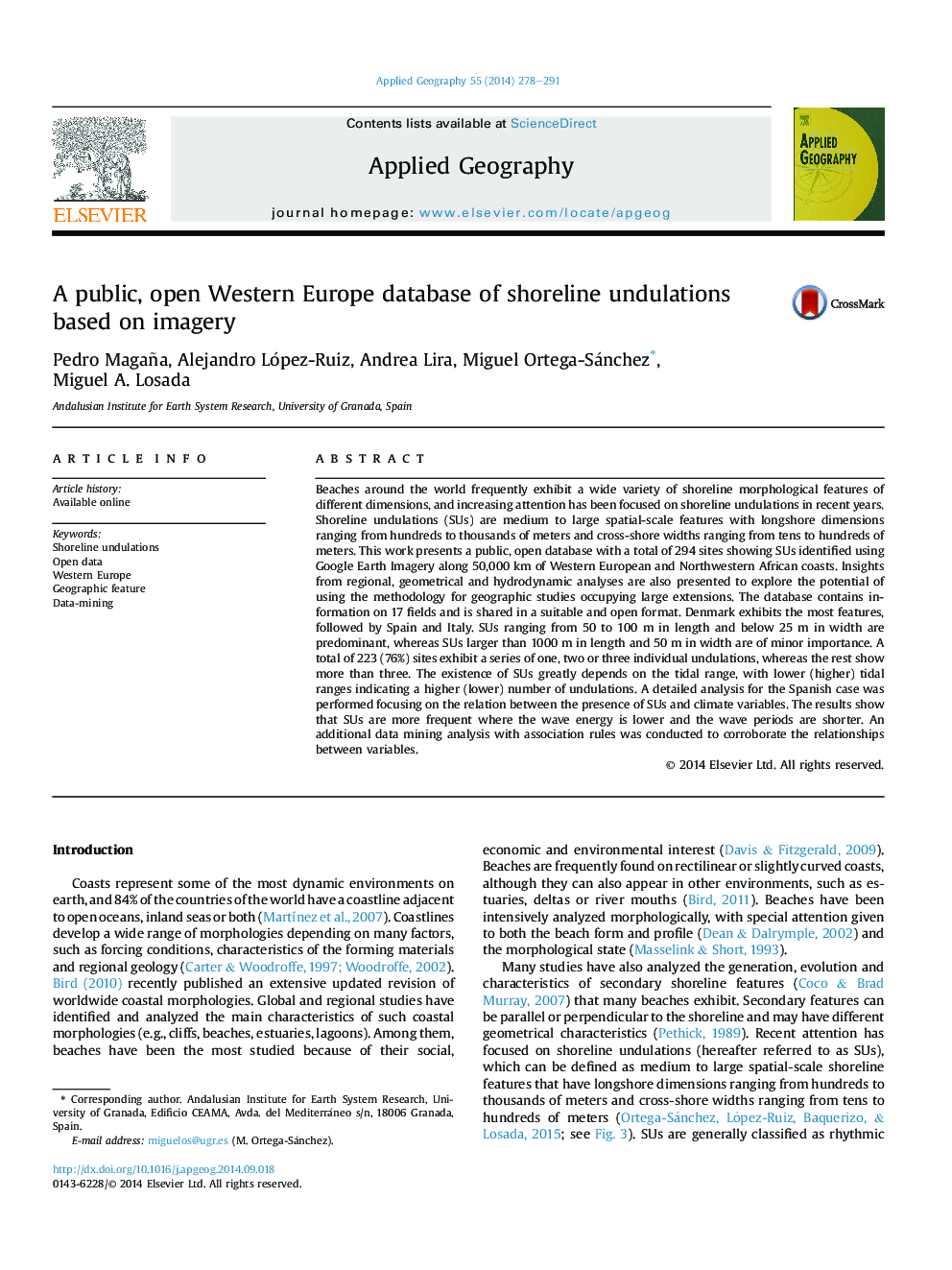| Article ID | Journal | Published Year | Pages | File Type |
|---|---|---|---|---|
| 6538689 | Applied Geography | 2014 | 14 Pages |
Abstract
Beaches around the world frequently exhibit a wide variety of shoreline morphological features of different dimensions, and increasing attention has been focused on shoreline undulations in recent years. Shoreline undulations (SUs) are medium to large spatial-scale features with longshore dimensions ranging from hundreds to thousands of meters and cross-shore widths ranging from tens to hundreds of meters. This work presents a public, open database with a total of 294 sites showing SUs identified using Google Earth Imagery along 50,000Â km of Western European and Northwestern African coasts. Insights from regional, geometrical and hydrodynamic analyses are also presented to explore the potential of using the methodology for geographic studies occupying large extensions. The database contains information on 17 fields and is shared in a suitable and open format. Denmark exhibits the most features, followed by Spain and Italy. SUs ranging from 50 to 100Â m in length and below 25Â m in width are predominant, whereas SUs larger than 1000Â m in length and 50Â m in width are of minor importance. A total of 223 (76%) sites exhibit a series of one, two or three individual undulations, whereas the rest show more than three. The existence of SUs greatly depends on the tidal range, with lower (higher) tidal ranges indicating a higher (lower) number of undulations. A detailed analysis for the Spanish case was performed focusing on the relation between the presence of SUs and climate variables. The results show that SUs are more frequent where the wave energy is lower and the wave periods are shorter. An additional data mining analysis with association rules was conducted to corroborate the relationships between variables.
Related Topics
Life Sciences
Agricultural and Biological Sciences
Forestry
Authors
Pedro Magaña, Alejandro López-Ruiz, Andrea Lira, Miguel Ortega-Sánchez, Miguel A. Losada,
